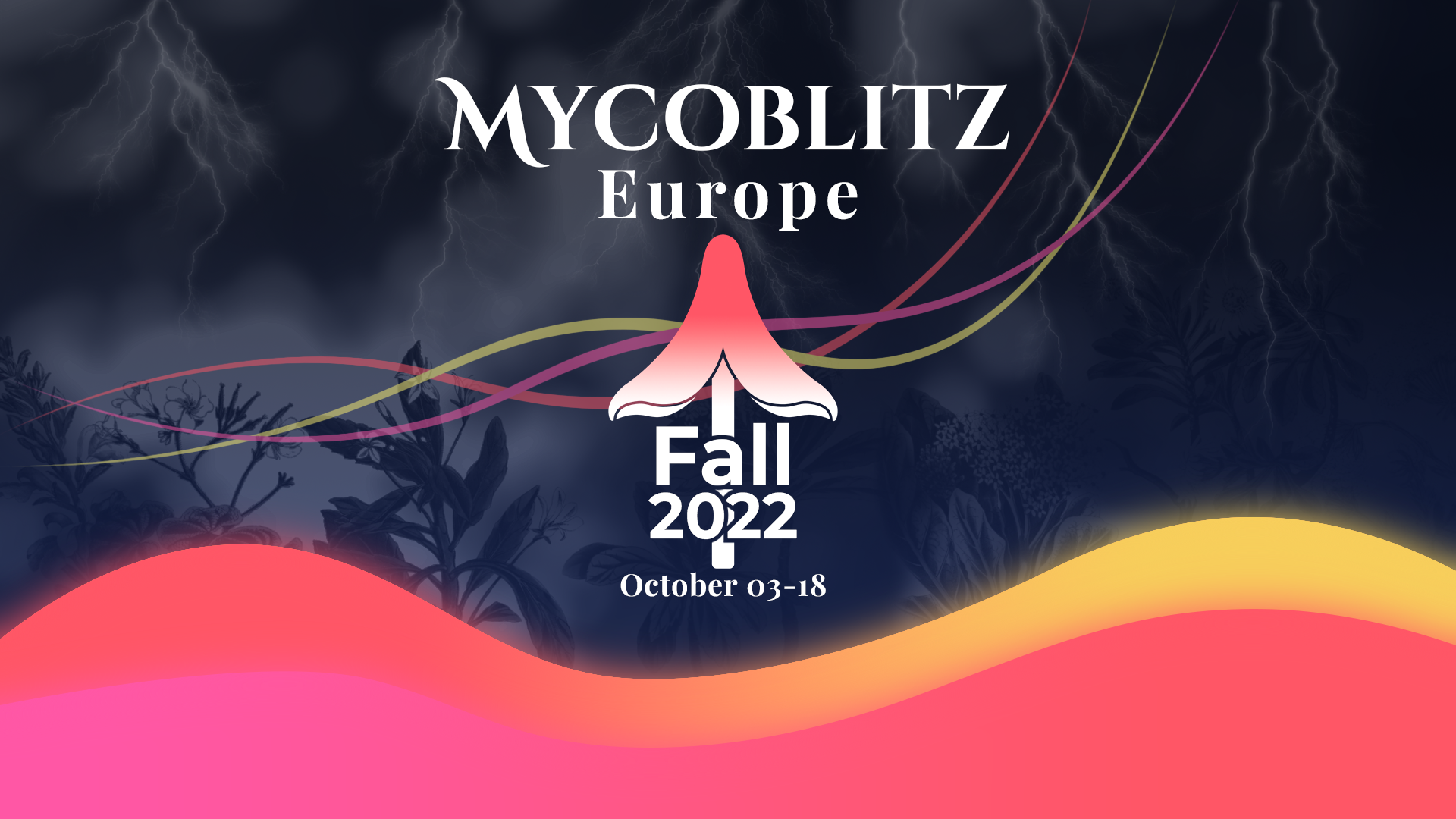Organisation de l'évènement
Aimez-vous observer la nature autour de vous ? Souhaitez-vous contribuer à la science durant vos sorties ? Nous vous invitons donc à nous rejoindre pour cet évènement !
Qu'est-ce qu'un bioblitz ?
Un bioblitz ou inventaire éclair est un inventaire de la biodiversité sur un lieu et durant une période donnés et effectué par un groupe de bénévoles. Durant un bioblitz, les espèces sont identifiées et répertoriées.
Participer
Ce bioblitz est destiné à tout le monde, aussi bien les débutants que les mycologues chevronnés. Ils vous suffit de créer un compte sur iNaturalist et de rejoindre le projet Mycoblitz Europe Fall 2022. Sur téléphone mobile, il est possible d'installer l'application iNaturalist sur Android ou iOS afin de pouvoir photographier et observer les espèces directement sur le terrain. Les observations correspondant aux critères seront automatiquement ajoutées au projet. Il faut toutefois noter qu'elles doivent au moins être identifiées grossièrement avant de pouvoir être détectées par l'algorithme.
Règles
Les taxons éligibles doivent être des champignons (y compris lichens), des oomycètes ou des myxomycètes.
Le bioblitz se déroule du 3 octobre 2022 au 18 octobre 2022 (heure d'été d'Europe centrale). La clôture de la mise en ligne des observations se fera en date du 28 octobre 2022. Les résultats seront annoncés lorsque les données auront été traitées.
Une seule observation doit être créée par collection. Une collection peut être constituée de plusieurs spécimens.
Les observations doivent comporter au moins une photographie. Il est conseillé de photographier le champignon sous plusieurs angles afin de permettre une identification ultérieure et une validation des données.
Les observations doivent provenir de la zone géographique suivante : Andorre, Belgique, France, Luxembourg, Monaco ou Suisse.
Conseils d'observation
Il est conseillé à tout membre d'essayer de créer une ou plusieurs observations avant le début de l'évènement. L'organisation sera à disposition pour vous assister mais il est possible qu'elle soit surchargée durant la période d'observation.
Les photographies doivent permettre une identification correcte du champignon. Il est donc conseillé de présenter plusieurs photographies sur une observation, présentant plusieurs détails et critères diagnostics. Il est également possible de décrire les critères non visibles ou difficiles à distinguer sur les photographies par la description de l'observation ou ses commentaires (odeur, saveur, microscopie, écologie, réactions chimiques, etc.). Des champs d'observation sont également disponibles pour y intégrer des informations récurrentes.
Pour les espèces rares, intéressantes ou méconnues, il est conseillé de conserver un exsiccatum de la collection (conservation de spécimens séchés pour une étude ultérieure). Il est encouragé de faire figurer l'utilisation de la microscopie et le détail de la littérature.
Les espèces parasites nécessitent souvent l'identification de l'hôte. S'il est connu, il est préférable de le mentionner dans l'observation. Si ce n'est pas le cas, une seconde observation afin d'identifier l'hôte peut être créée et une mention de ceci peut être ajoutée à l'observation.
Les photographies doivent être de préférence sous une licence Creative Commons afin de pouvoir être utilisées par les scientifiques. La licence CC BY-NC permet une utilisation libre sous réserve de citation de l'auteur hors fins commerciales tandis que la licence CC BY permet une utilisation libre sous réserve de citation de l'auteur.
Si une espèce manque dans la base de données d'iNaturalist, merci de le faire parvenir à l'organisation.
Catégories
Il est possible de concourir dans plusieurs catégories simultanément. L'objectif est avant tout de contribuer à la science et d'apprendre de nouvelles choses sur son environnement mais si vous ou votre entreprise souhaite parrainer une catégorie, c'est tout à fait possible.
Plus d'espèces
Les membres ayant observé le plus d'espèces différentes.
Plus d'observations
Les membres ayant créé le plus d'observations.
Meilleures contributions
Les membres ayant observé le plus d'espèces rare ou méconnues.
Meilleure photographie
Les membres ayant réalisé les meilleures photographies (une seule photographie par membre).
Assistance
Si vous avez besoin d'assistance, merci de contacter l'organisation. Vous pouvez mentionner @nschwab sur iNaturalist ou envoyer un message à ce même compte. Il est également possible de contacter Nicolas Schwab sur Facebook ou Messenger.
Vous pouvez également apprendre à utiliser iNaturalist sur la page Débuter et Aide. Un tutoriel vidéo est également mis à disposition des utilisateurs.
Il existe également un forum iNaturalist sur lequel les membres seront ravis de vous aider.





